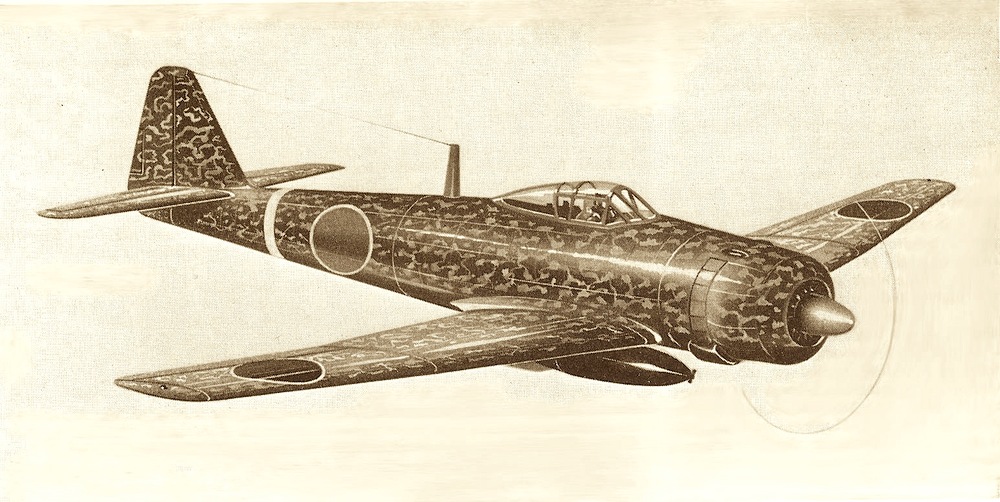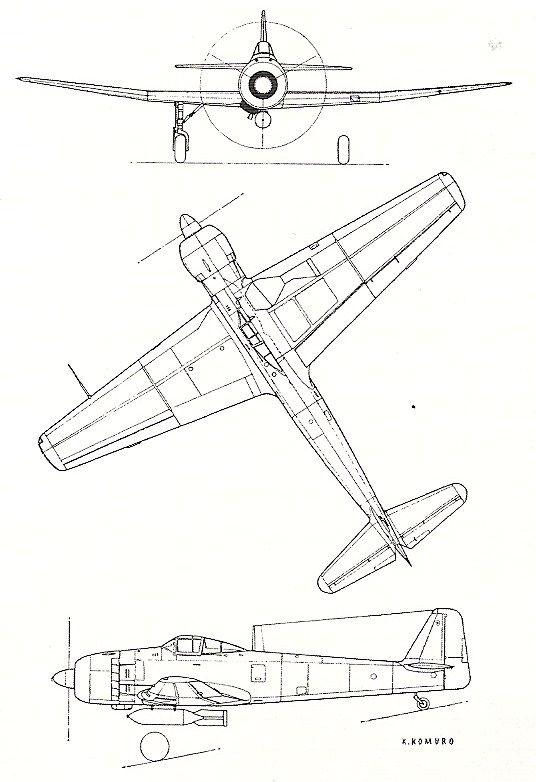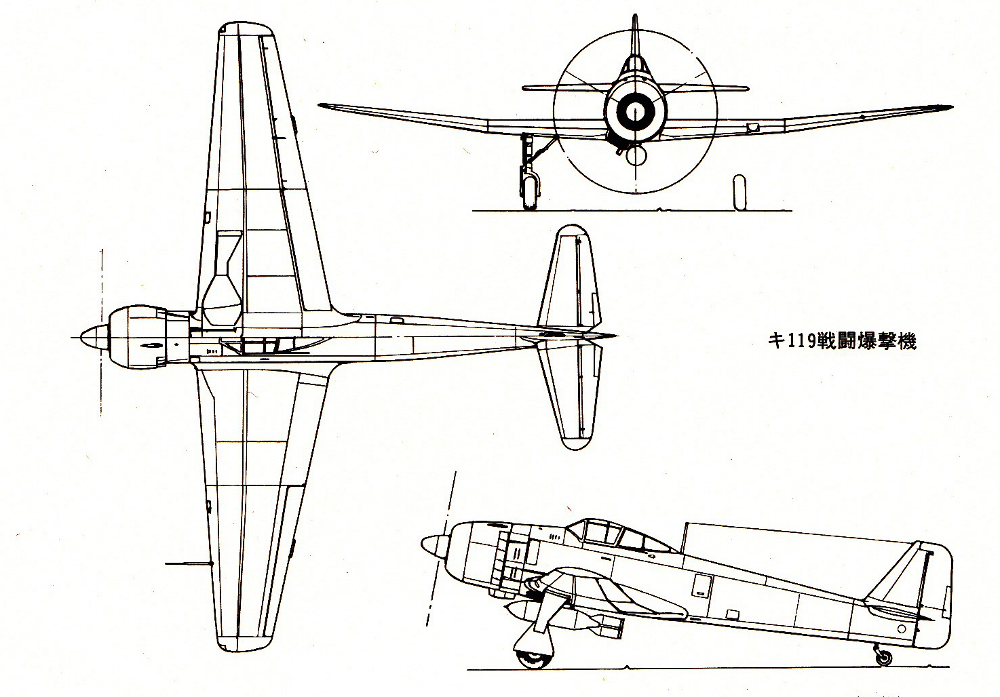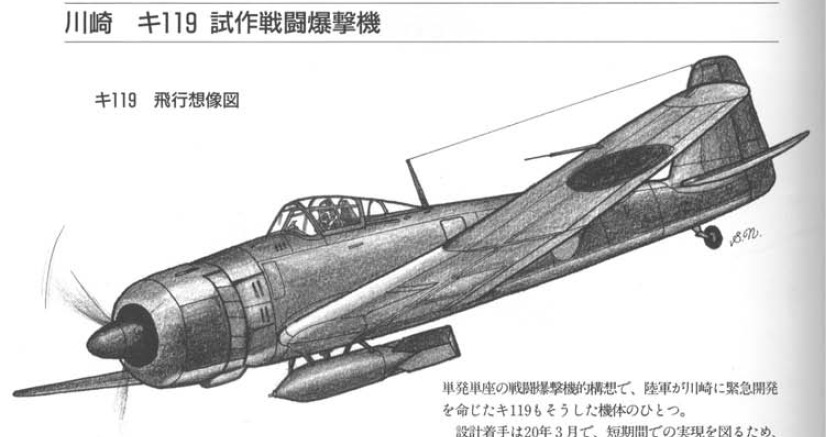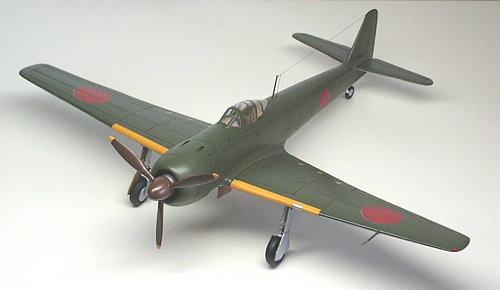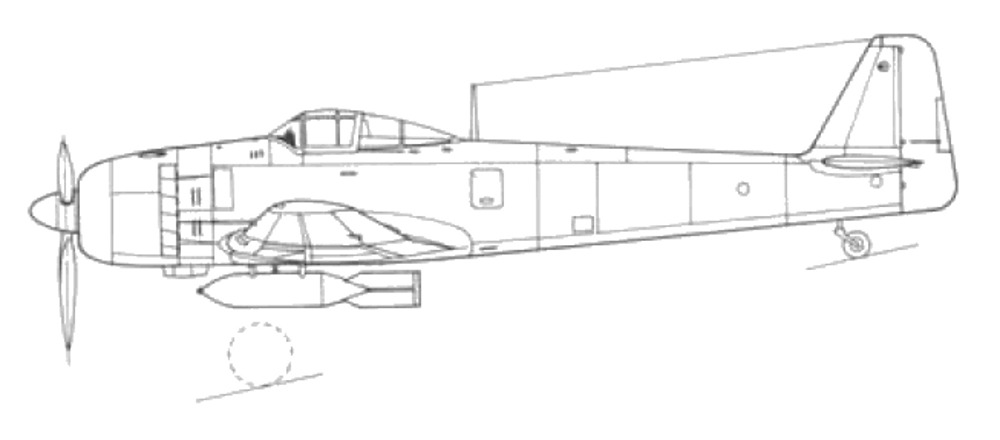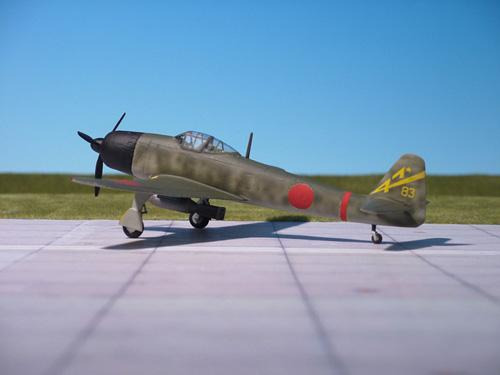(Attention! This isn’t a suggestion. I already suggested this, and it got rejected. I’m just resending this as a general discussion, and maybe come up with ways to improve this or add. Also be nice I spent like 4 hours researching and writing this till like 3am, it’s also my first suggestion.)
- Yes
- No
The Kawasaki Ki-119 is a enlarged Ki-100 design ment to be a fighter bomber. It was the first Japanese fighter bomber to attack ships by dive bombing or torpedo. After ship attack, fighting with enemy fighter and return to the base.
The Imperial Japanese army ordered development of a fighter-bomber to the Kawasaki airplane in March, 1945 (Showa 20). As a mission of the fighter-bomber, a bomb is hunged under the body, attack enemy’s naval fleet first, and fight with an enemy’s fighter after that. Kawasaki started development by having made the Takeo Doi engineer into the chief, and completed the full-scale mock-up in June 1945. The shown design conditions
- Have intensity required for diving speed 800km/h and an air battle in single seat form.
- An engine is using Ha 104 under practical use.
- Make a cruising range 600km with 800kg bomb, 1200km with special equipments.
- Armaments at its minimum were two or more 20mm cannons.
- From the necessity for rapid mass production, avoid forge parts as much as possible on parts, and strive for reduction of machine parts.
- Maintenance be simple. The planned fighter-bomber was a single-engine plane of a huge form called about 14 m in full width, about 12 m in full length, and the weight of about 6 tons, and appearance was the touch which made 5 shiki fighters large-sized. The body was made into all the metal and this aircraft was for simplification / substitution of the 4 shiki heavy bomber by which conversion production was being carried out in Kawasaki. As for the engine, same Ha 104 (HA 42-11) as 4 shiki heavy bomber 1 type was planned at the beginning. When a 4 shiki heavy bomber succeeded in performance gain, it considered equipping same Ha 214 as 4 shiki heavy bomber 2 type. In addition, this fighter-bomber was attaining shortening of the development period by diverting the design of the existing body. Moreover, this fighter-bomber was also taking facilitation of maintenance into consideration for the improvement in an operating ratio. The nose of an airplane was equipped with 2 20-mm cannons. (Blackkite,12 March 2014)
I quoted Blackkite on the Secret Projects forum, beacause im not a good writer. don’t worry I am using the same source.
Takeo Doi and his team produced a design and a mock-up in three months. The fuselage was based on that of the Ki-100 radial engined fighter. The aircraft was made as easy to fly as possible - a wide track undercarriage with good shock absorbers was chose to make the aircraft easy to handle on the ground, and large wings with a high aspect-ratio were designed, to make it easy to handle in the air. The aircraft was designed to carry three different sets of armament. In its basic light bomber role it was to be armed with two 20mm cannon and one 1,764lb bomb. It could also serve as a fighter escort, with no bombers but two extra 20mm cannons, or as a dive bomber with two 551lb bombs. (Rickard, J (18 May 2011)
The Ki-119 was designed to use only existing parts and avoid forged and machined parts as much as possible.
Comparison of Ki-119 and Reppu
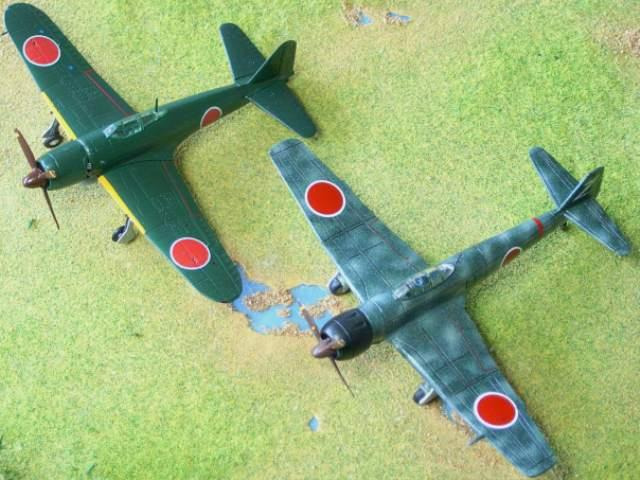
The Kawasaki Ki-119 fighter bomber is armed with 800kg bomb or 800kg torpedo under the fuselage. The small arms consist of two 20mm Ho-5 cannons in the nose. The aircraft was also designed to be configured with two 20mm Ho-5 cannons in the wings, but this would decrease its bomb load.
- Armaments: 20 mm Ho-5 cannon x2
- Bomb: 800kg bomb or 800 kg torpedo
No.80 Model 1 800kg bomb
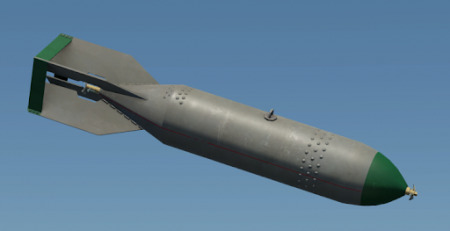
- Length: 38’ 10.5" (11.85 m)
- Height: 14’ 9.2" (4.5 m)
- Wingspan: 45’ 11.1" (14 m)
- Wing area: 343.367 sq. ft (31.9 sq. m)
- Empty Weight: 8289 lbs (3670 kg)
- Loaded Weight: 13,184 lbs (5980 kg)
- Engine: Mitsubishi “Ha 104” air cooling double row radial type 18 cylinder 2,000hp (take off power)
- Propeller: Fixed-speed variable pitch 3 blades 3.60 m in diameter
- Crew: 1
Note: Detailed blueprints and full-scale mockup examined and finished before the end of the war. aircraft incompleted.
- Range (normal): 373 miles (600 km)
- Range (max): 746 miles (1200 km)
- Cruise Speed: 249 mph (400 km/h) at 13,125 ft
- Max Speed: 360 mph (580 km/h) at 19,685 ft (6000 m)
- Climb to/in: 19,685 ft (6000 m) in 6 min 6 sec
- Ceiling: 34,450 ft (10,500 m)
The Ki-119 would be a wonderful addition to the dive bomber line and give Japan a strong option for CAS. I wouldn’t call this “paper” aircraft, as all the components existed; were widely used, and a full-scale mockup was made. Japan wasn’t able to continue development because the facility that was keeping the blueprints was bombed and that delayed the production of the n.1 prototype to 1946, (its previous completion date was September 1945).
Please discuss in the comments and to share your own knowledge on this subject. this is my first true suggestion, so tell me what you think.
-Winter :)
- TT Vehicle
- Squadron Vehicle
- Premium Vehicle
- Don’t want it
Sources
Kawasaki Ki.119 Info
Kawasaki Ki-119
キ119 (航空機) - Wikipedia
Cannon, 20mm, Ho-5 | National Air and Space Museum
Unicraft 1/72 Ki-119
Aviation of Japan 日本の航空史: The Kawasaki Ki-119
Kawasaki Ki-119 Experimental Fighter-Bomber | Secret Projects Forum
Kawasaki Ki-119 - Wikipedia, la enciclopedia libre
The Xplanes of Imperial Japanese Army and Navy 1924-45 | PDF
